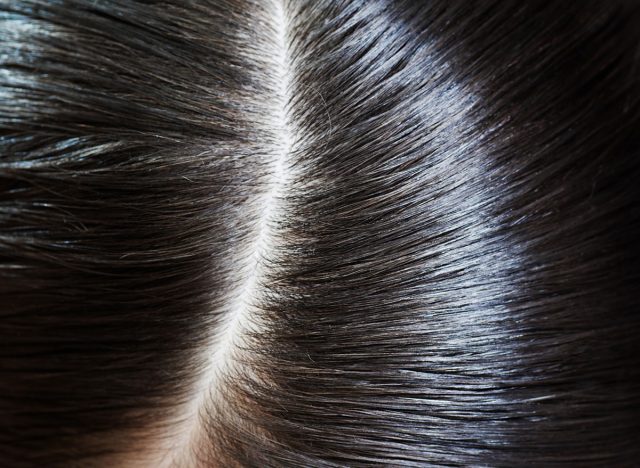5 Hairstyles That Can Actually Worsen Thinning Hair

Thinning hair can cause a lot of stress (and stress can cause thinning hair, which is a terrible chicken-and-egg situation). Whether your hair is thinning because of genetics or from lifestyle factors (for example postpartum hair loss, overly processed hair) certain hairstyles can unfortunately make it worse. Luckily there are ways to disguise hair loss while hair is improving—here are five looks to avoid at all costs if you want to repair and restore your thinning hair.
Tight Ponytails

Tight ponytails can put a lot of stress on hair and cause breakage. "Every once in a while, it's OK to wear your hair tightly pulled back, but you want to avoid wearing a tightly pulled hairstyle every day," says the American Academy of Dermatology. "The constant pulling can cause strands of your hair to break or fall out. In time, the continuous pulling can damage your hair follicles. If you damage your hair follicles, your hair cannot grow back, so you develop permanent hair loss."
RELATED: I Lost my First 25 Pounds by Walking
Wet Buns

Wet buns can cause breakage to already thinning hair, exacerbating the problem. "When you tie your hair back it stretches up to a third of its length causing tension breakage," stylist Rob Reeves tells Vidal Sassoon Australia. "So make sure it's pretty dry before putting it up. You might want to rethink that wet hair bun next time. Certainly not an option for anyone with fine fragile hair. And don't sleep with wet hair – again it will cause tangles and breakage and stretch your hair."
Hair That's Too Long

Having a long style can make thinning hair worse, experts say. "In general, if you have finer hair, don't grow it too long," hairstylist Neil Moodie tells Harper's Bazaar. "The longer it gets, the weaker the hair gets and so it can tend to look lank, straggly and not healthy. Instead, focus on creating layers within shorter styles, to get a bit more height. I wouldn't recommend really short layers though because they can highlight the fineness of the hair."
Tight Braids and Weaves

Tight braids and weaves may cause an irreversible baldness called Central Centrifugal Cicatricial Alopecia (CCCA). "Traction alopecia (baldness) is caused by chronic traction (pulling) on the hair follicle and is seen most commonly in African-American females associated with tight braiding or cornrow hair styles," according to Michigan State University's Women's Health Research Institute. "It is generally present along the hairline. Men who attach hairpieces to their existing hair can experience this type of permanent hair loss if the hairpiece is attached in the same location over a long period of time."
Related: This Is Exactly How to Lose Body Fat This Year
Middle Parts

If you have thinning hair, the middle part is unfortunately not your friend as it accentuates the hair loss. "With a middle part your hair tends to frame the entire expanse of your face. Middle parts therefore make a round face appear even rounder," according to Schwarzkopf. "They are also decidedly unhelpful if you like to hide some lines or wrinkles around the eyes and on your forehead. Wavy or curly hair looks great with a middle part, while straight and thin hair tends to look stringy rather than sleek."
💪🔥Body Booster: If you have fine or thinning hair, avoid excessively long styles, which can make it appear limp and unhealthy. Instead, opt for shorter, layered cuts to create volume and movement.




